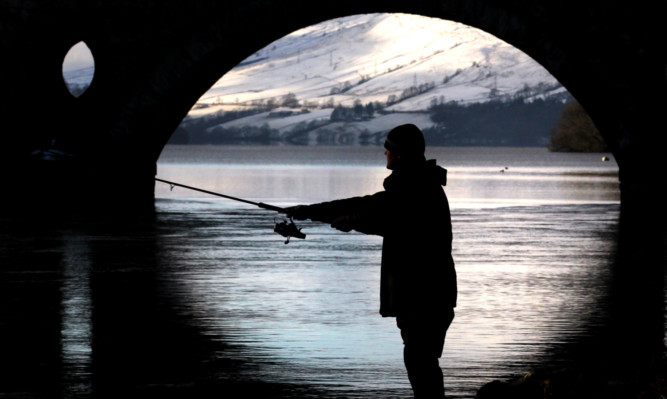Salmon catches on Scotland’s biggest river have leapt more than 75% since last year, and could be as much as 96% higher.
Tay ghillies using an online reporting tool recorded 700 fish caught last month, compared to just 307 in the same period last year.
However, as reporting to the site is not compulsory it is thought the true number will be even higher, possibly as much as 96% on last year’s April catch.
Experts say the boom has been caused by a combination of colder weather and more mature fish coming into the river.
Conditions have been described as similar to those of the 1920s when a number of large salmon were taken from the river, including the record-breaking Ballantine salmon.
The 64lb fish was caught by Georgina Ballantine in 1922, and the record still stands today.
Doctor David Summers, fisheries director at the Tay District Salmon Fisheries Board, said there were two main factors causing the salmon leap.
He said: “Several things have happened this year; because it’s been colder the fish haven’t run as fast as they tend to do in most years so a greater proportion of fish have been caught in the main river. A lot of the main river beats have done a lot better than they would normally do.
“Quite clearly by the number of fish that are being caught throughout the entire catchment that’s not the only story there’s clearly more (mature) fish as well.
“In 2007 there was just 298 for the whole catchment, the next year 617, in 2009 it was 386, then 381, 490 and last year 427 so you can see it is a huge leap.”
Dr Summers said that as the proportion of immature salmon, known as grilse, caught decreases the number of mature salmon being caught tends to increase.
He said the grilse seem to be feeding further afield and spending longer at sea before returning to the Tay as adults, resulting in bigger fish.
He said: “What seems to be the case is that in the North-East Atlantic is that temperatures have increased over the years. So grilse which are believed to feed relatively close to the UK seem to be doing poorly but the further they go, such as Greenland, conditions seem to be quite good.
“The further a fish swims the better the conditions are. If they don’t get as much food in their first year at sea they grow more slowly and stay at sea.”
Dr Summers said the promising start to the season could herald a return to the river’s glory days. He said: “There’s been some lovely fish last week we had a 36 pounder, which is encouraging.
“This year there have been a number of fish in the high twenties and even into the thirties. These are the sort of fish that the Tay used to be really famous for.”
